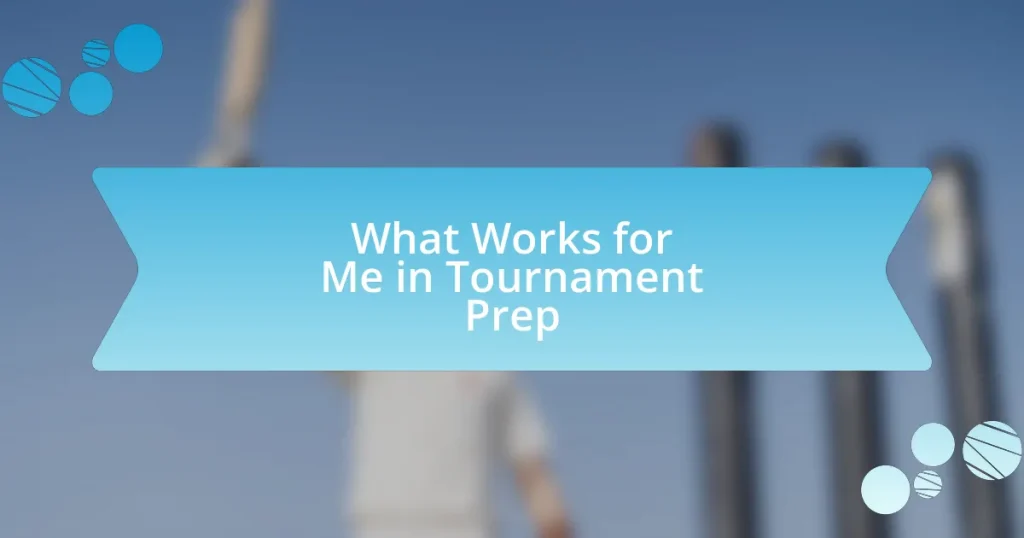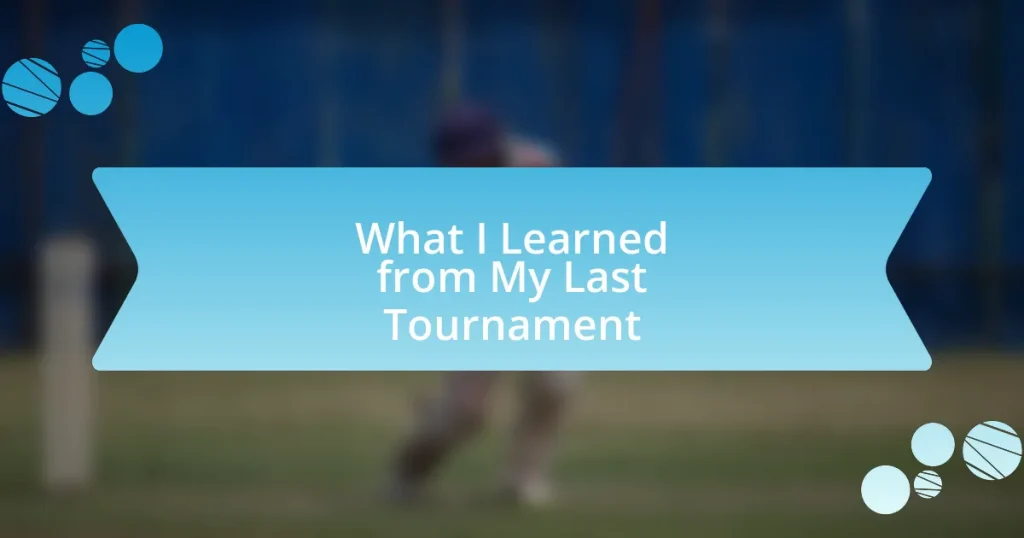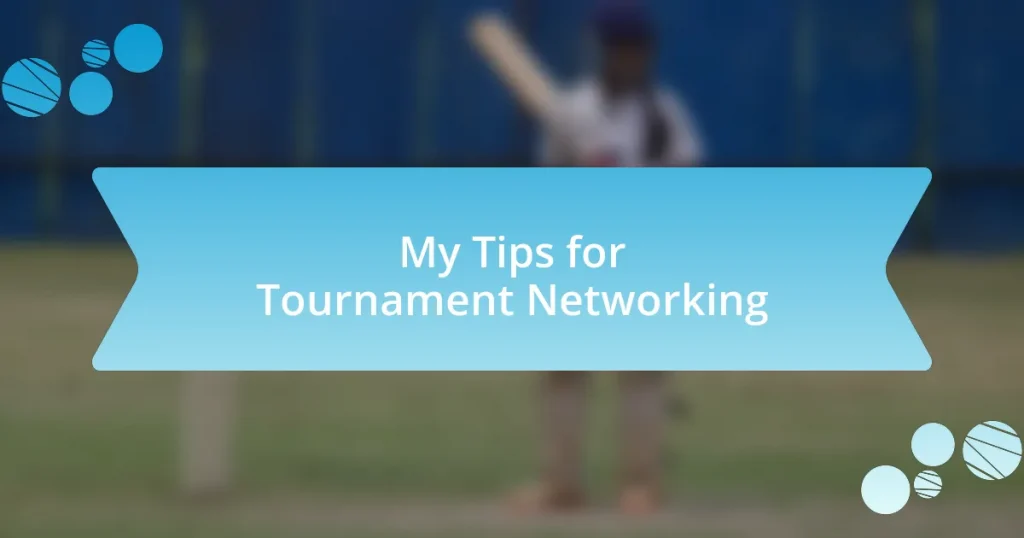Key takeaways:
- Setting clear tournament goals aligned with personal growth reduces anxiety and enhances performance.
- Collecting both quantitative and qualitative data on performance reveals insights into gameplay and emotional factors.
- Effective team communication is crucial for performance, especially under pressure; fostering a culture of openness enhances team dynamics.
- Documenting insights from past events helps identify trends and prepares teams for future competitions, promoting continuous improvement.
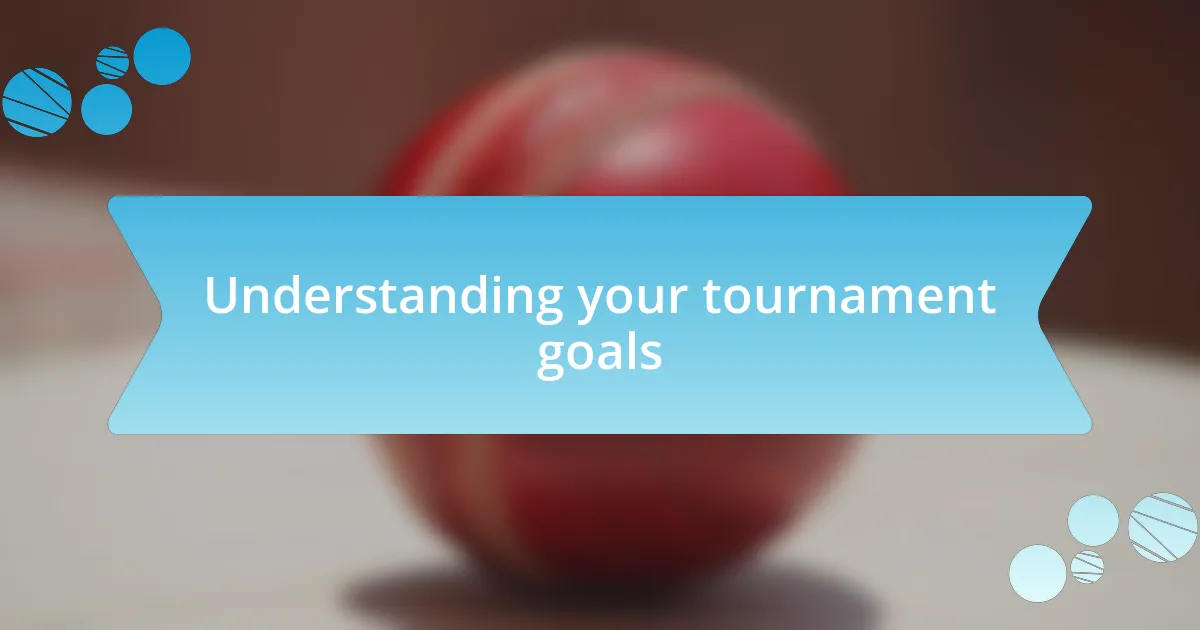
Understanding your tournament goals
When I think about tournament goals, I often recall my early days of competing. I remember the confusion I felt trying to juggle the desire to win with the need to learn. Setting clear objectives—like improving specific skills or gaining experience—helped me focus my efforts and made the journey more rewarding. Have you ever felt overwhelmed by the pressure to win?
It’s crucial to align your goals with your personal growth. I once entered a tournament where I aimed to push my limits instead of fixating solely on the podium. Surprisingly, I found that focusing on self-improvement not only reduced my anxiety but also enhanced my overall performance. What are the skills or aspects you want to grow in?
Identifying your motivations can profoundly influence your approach. Do you seek validation, camaraderie, or perhaps to explore a new competitive landscape? I’ve discovered that understanding the ‘why’ behind my participation shapes my experience and helps me enjoy the event more fully, regardless of the outcome. What drives you in these tournaments?
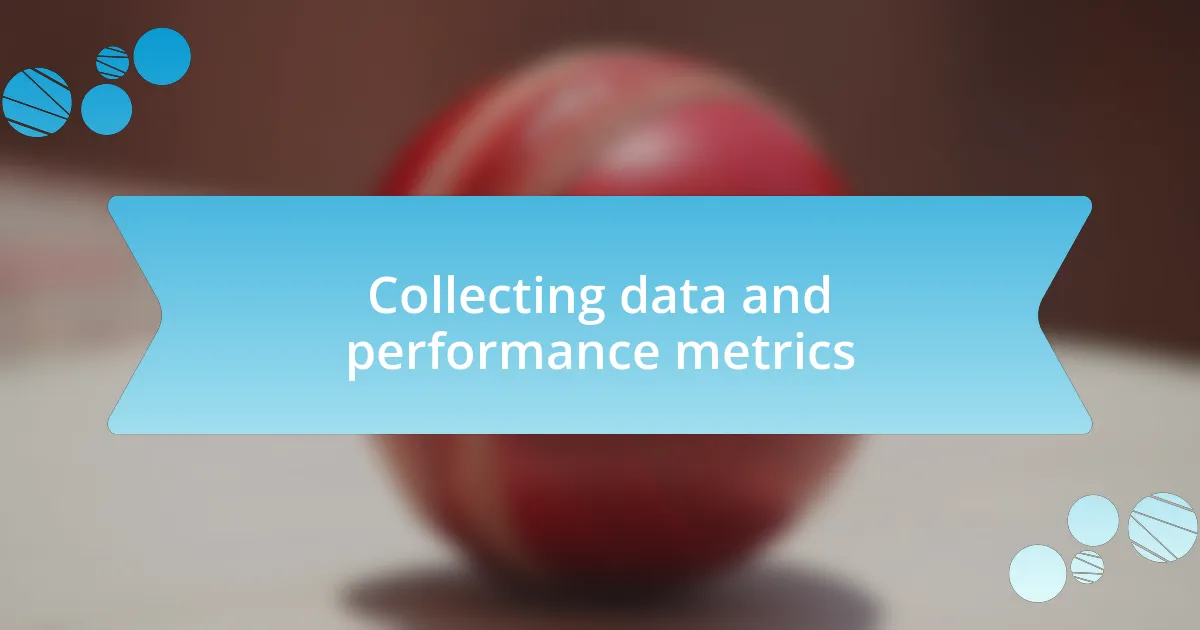
Collecting data and performance metrics
Collecting data and performance metrics is a critical aspect of tournament analysis that can truly illuminate areas for improvement. I remember attending a competitive event where I meticulously noted not just my scores but also my reactions during matches. This allowed me to pinpoint emotional highs and lows that directly correlated with my performance, providing a deeper understanding of what influenced my success. Have you ever reflected on how your mindset impacts your results?
In my experience, quantifying performance metrics goes beyond just numbers; it encompasses qualitative insights as well. At one tournament, I recorded feedback from my coach immediately after each match. This tangible input paired with performance stats helped me see patterns over time, revealing that certain behaviors would consistently lead to either success or failure. This method of combining qualitative and quantitative data gave me a broader perspective on my gameplay. How do you typically gather feedback?
To optimize your analysis, I suggest creating a systematic approach to collecting data. This can include tracking your win-loss ratios, analyzing opponent strengths, or even measuring mental resilience during critical moments. I often use spreadsheets to organize my findings, and it’s fascinating to visualize progress over several tournaments. Seeing those trends can be motivating and incredibly enlightening. What tools do you find most effective for data collection?
| Data Type | Method of Collection |
|---|---|
| Performance Stats | Score tracking, win-loss records |
| Emotional Insights | Personal reflections, coaching feedback |
| Behavior Patterns | Video analysis, peer reviews |
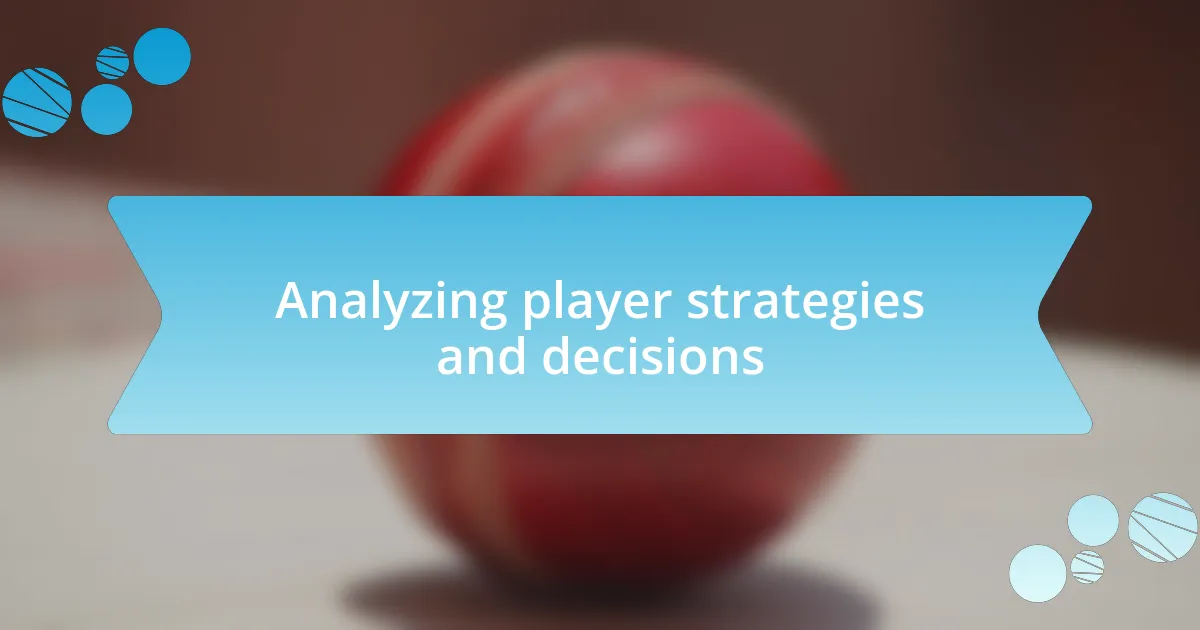
Analyzing player strategies and decisions
Analyzing player strategies and decisions sheds light on how choices can lead to victory or defeat. I’ve often found myself reflecting on pivotal moments during matches, such as the time I hesitated before making a crucial play. This indecision not only affected my performance but also served as a learning opportunity. By reviewing those moments and contrasting them with instances where I acted decisively, I uncovered vital insights about my gameplay.
When evaluating player decisions, consider these factors:
- Risk Assessment: How did players weigh potential rewards against possible losses?
- Adapting Strategies: Were there instances where players adjusted their tactics mid-game based on opponent behavior?
- Resource Management: How effectively did players use their available resources, be it time, energy, or in-game items?
I’ve learned that dissecting these elements can reveal not just what went wrong or right, but also highlight underlying strategies that can be applied in future events.
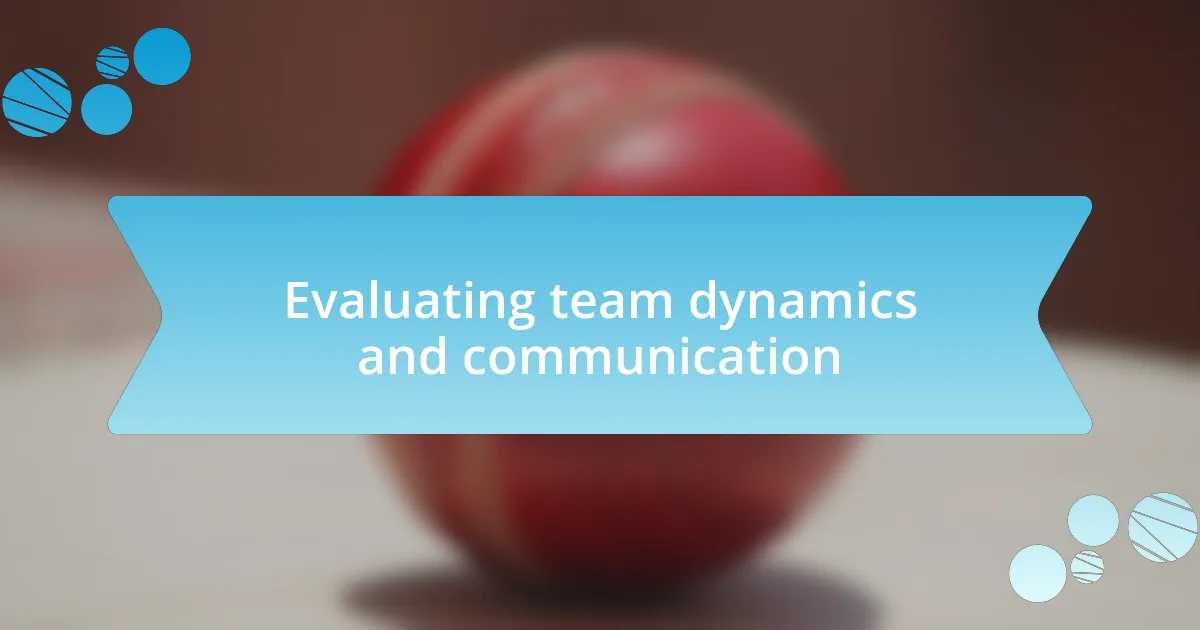
Evaluating team dynamics and communication
Evaluating team dynamics often involves understanding how communication shapes a team’s performance. I vividly remember a game where our communication faltered. During critical moments, players were hesitant to speak up, leading to missed opportunities. This experience made me realize that clear communication can be the difference between victory and defeat.
When assessing team interactions, I find it essential to explore both verbal and non-verbal cues. For instance, I once observed a player who could convey confidence with a simple nod, rallying the team’s spirits. On the flip side, a lack of eye contact or closed body language can signal uncertainty and create an atmosphere of hesitation. How can teams foster an environment where everyone feels comfortable sharing their thoughts openly? From my perspective, encouraging open dialogue in practice can work wonders in building trust.
It’s also crucial to note how team dynamics evolve under pressure. I recall a tournament where my team faced intense pressure, and our reactions unveiled our true cohesion. Those moments of stress either pulled us together or drove us apart. Sometimes, it was the small, supportive gestures that made a lasting impact, reminding me how vital emotional intelligence is in maintaining a unified front. Each of these interactions, whether positive or negative, offers a learning opportunity to enhance future teamwork.
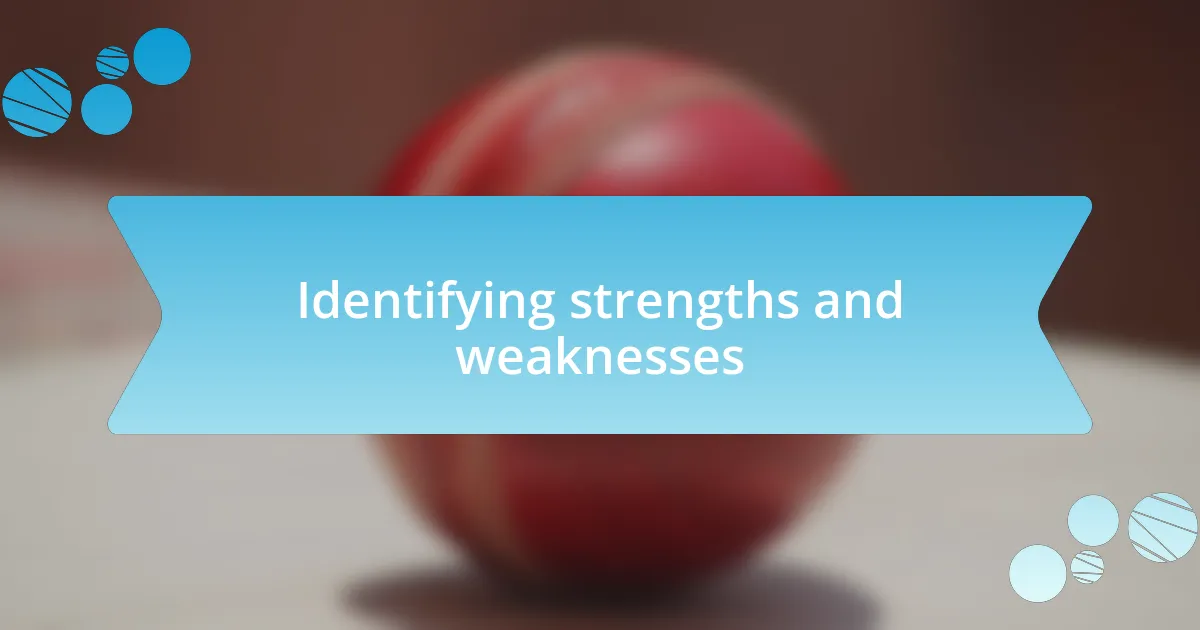
Identifying strengths and weaknesses
Identifying strengths and weaknesses in a team begins with a thorough evaluation of individual contributions. I clearly remember a match where one player consistently made strong defensive plays but struggled with offensive communication. Noticing this contrast prompted us to provide tailored support, helping him feel more at ease expressing himself during critical attacks. How often do we overlook potential by failing to address these disparities in individual roles?
In my experience, analyzing gameplay footage can reveal remarkable insights about team dynamics. I once watched a video of a prior tournament and was shocked to see how certain players thrived in specific situations, showcasing their strengths, while others seemed hesitant and unsure. This visual feedback not only helped me identify individual skills but also highlighted the importance of strategically using those strengths in future games. Have you ever seen how certain players shine in high-pressure scenarios while others shrink back?
Additionally, fostering a culture of honest feedback plays a key role in unearthing both strengths and weaknesses. There was a time when our team implemented post-game discussions where every player shared one aspect they felt they excelled in and one area they wanted to improve. These conversations were enlightening, not just for individual growth but for team cohesion as well. What can we learn from creating a safe space for vulnerability and growth?
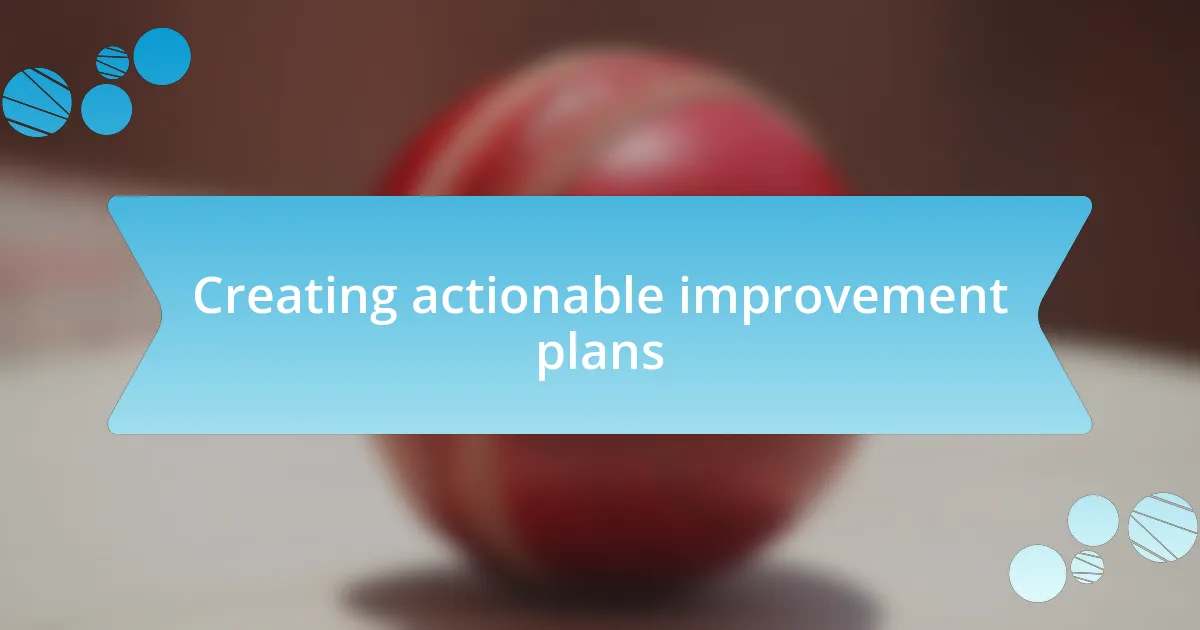
Creating actionable improvement plans
Creating actionable improvement plans requires clear, practical steps that channel insights from prior evaluations. After discerning a player’s specific weaknesses, I remember sitting down with them post-match to craft a targeted plan. We set achievable goals, focusing on his offensive communication, which transformed an area of struggle into newfound confidence during scrimmages. Have you ever seen how goal setting can spark a player’s motivation?
Equally important is ensuring these plans are adaptable. I once developed a strategy for our team that changed dynamically based on each player’s progress. We would regularly review our goals in practice sessions, tweaking them as we went along. This approach not only kept everyone engaged but also instilled a sense of ownership over their development. How can embracing flexibility enhance our training processes?
To make these plans more effective, I emphasize the importance of celebrating small victories along the way. After implementing individualized plans, I often reflected on the successes with the team, whether it was improved communication or a key defensive play that changed the game. This acknowledgment not only boosted morale but reinforced the idea that progress is often incremental. How can we ensure that our improvement plans become a source of motivation rather than a burden?
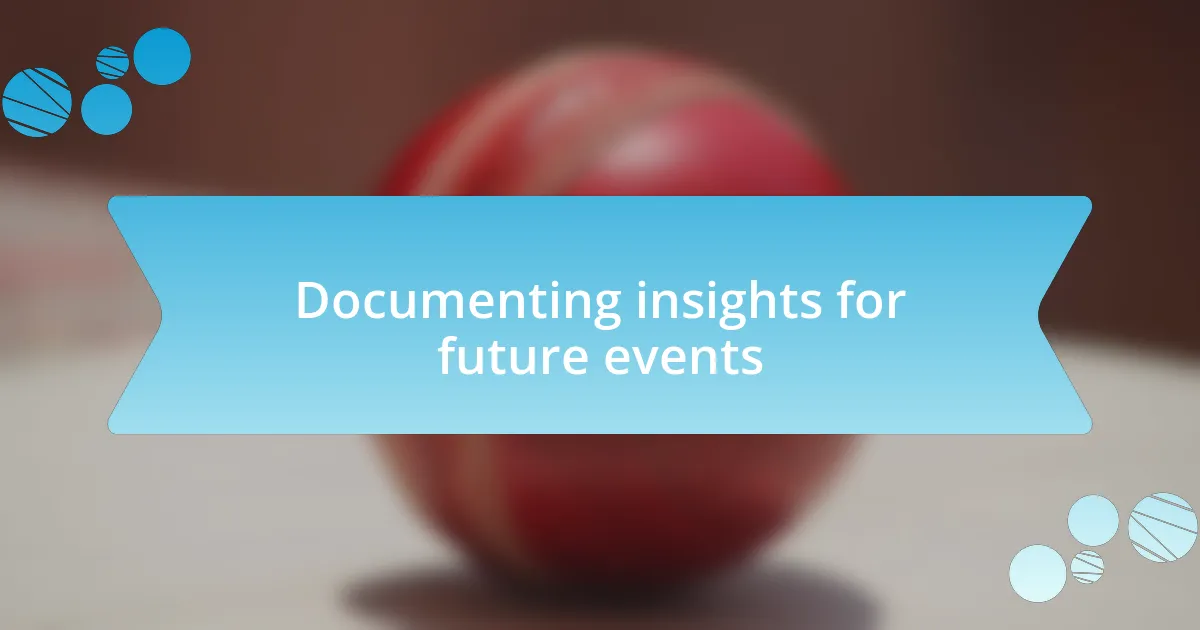
Documenting insights for future events
Documenting insights is crucial for shaping future events in the tournament scene. I remember after one particularly challenging event, my notes revealed patterns in team performance that hadn’t been apparent during the heat of competition. By jotting down these observations right after matches, I was able to highlight critical moments that could be revisited during training. Have you ever found that instantaneous reflections uncover details you’d otherwise overlook?
In my experience, organizing these insights into categories—strengths, weaknesses, and unexpected outcomes—has proven incredibly helpful. For instance, after analyzing match footage, I created a shared document that my team could access anytime. This transparent resource sparked conversations and encouraged players to contribute their thoughts and experiences. Doesn’t it feel good when everyone has a voice in their development?
Looking back on tournaments, I often revisit those documented insights to assess long-term trends. One year, I noticed specific strategies that consistently worked against certain opponents. Sharing these findings in our pre-tournament meetings not only prepared us better but also built a sense of camaraderie as we collectively strategized on how to tackle familiar challenges. How valuable is it to have a treasure chest of knowledge at our fingertips?













